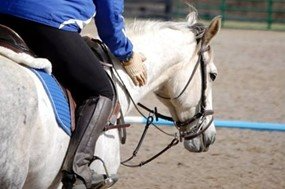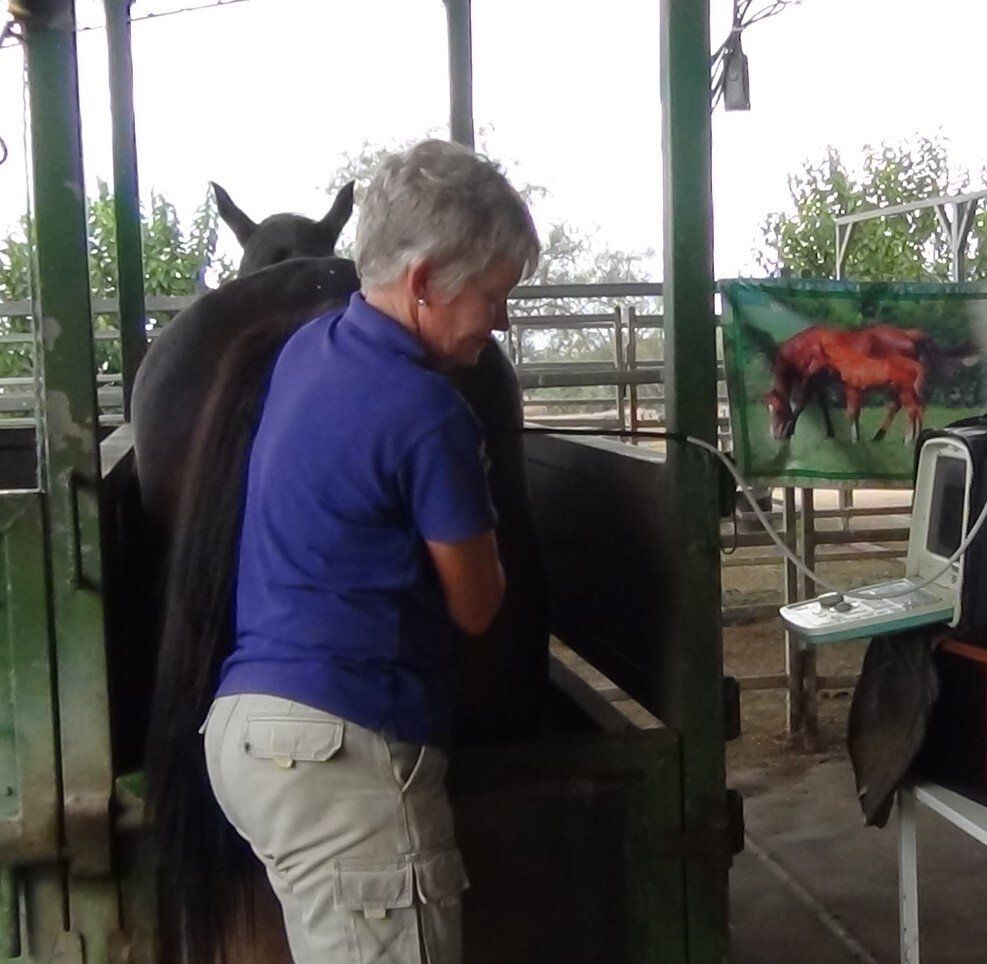Horse talk Articles
ALTERNATIVE THERAPIES - FLAXSEED
THE HISTORY OF SOME COMMONLY USED "ALTERNATIVE MEDICINES" - FLAX SEED (LINSEED)
(Article by Dr. Charissa Francies Smith BVSc Dip Ac Acacia Animal Care; AVA Queensland News; December 2010.)
Linum usitatissimum (Flax or Linseed)
The oil from the linseed or flax plant seeds has become a common supplement for small animals. It is used to provide antioxidants, and is part of some commercial dry foods. The seed itself is also espoused as a common supplement for pets, and the phytoestrogenic properties (detailed in Mills and Bone), "The Principles and Practice of Phytotherapy: modern herbal medicine" 2000, p54 ISBN 0443060169) are commonly overlooked.
It is inexpensive, and if kept cool is long lasting. It came into vogue in the 1990's when according to a lecture at UQ given by Isobel Johnson, the balance of Omega 3, 6 and 9 was recommended to be ideal for dogs as an antioxidant reducing allergic skin irritation. Since then there have been many erudite articles describing its use e.g. Wynn and Chalmers "Alternative therapies for pruritic skin disorders", Clinical Techniques in Small Animal Practice, Vol 17:1 p 37-40. Wynn and Fougere have alerted us to the use of Flaxseed, not the oil as a cancer therapy p 301 "Veterinary Herbal Medicine" (2007, ISBN: 97803230299878).
Up until the 1980's flaxseed oil was commonly known as raw linseed oil, and was used mainly for large animals as a laxative and to put a shine on the coat.
When using it as a laxative in the 1970's for treating horse sand colic, it was mixed as one large beer bottle of beer to 1 large beer bottle of linseed oil, emulsified and used as a drench by stomach tube. This mixture could also be emulsified and used with warm saline (4 litres) and given rectally.
In Mrs M Grieve's book, "A Modern Herbal" (1931) she gives details of the multpile uses of the plant in human medicine over the centuries, but relegates it to a purgative in veterinary medicine. The seeds were used extensively for poulticing, and it is likely this was extended to race horse medicine in earlier centuries.
Bill Smith (my grandfather), repeated winner of Trotting races at Barraba and Tamworth in the 1930s used a combination of sulphur powder, molasses and linseed oil as a regular supplement to his horses to keep them "in trim"; 1 desertspoon sulphur powder, 1/2 cup linseed oil and 1/2 cup molasses per horse per day. At this level, it was not laxative. He also swore that if he gave a desertspoon per day of this mix over summer to his working dogs, he had no trouble with ticks.
The British Veterinary Codex of 1905 describes linseed oil as the fixed oil expressed from the ripe seeds if Linum usitatissimum. It also describes the acrid taste which comes with the oxidation of the oil which can occur rapidly when exposed to high temperatures such as commonly occur in the Queensland summer (this is a drawback to its use. The oxidised oils form trans fatty acids which may be carcinogenic when eaten). The Codex describes the occasional use in dogs for coat improvement, with the development of nausea; this may be due to oxidisation of the oil, to overdose, or to the palmitic and stearic acids whose quality can vary with the plant source. Good quality oil is pale in colour, has a bland smell, and has been kept refrigerated.
The linseed plant has been in use since recorded history. Cloth made from it was found in Egyptian tombs, and Joseph's coat of many colours in the Old Testament, and the shroud of Jesus Christ were made from it. Interestingly, there is little reference to it in Chinese herbal texts or in Culpepper's book, "The Complete Herbal" (1653), even though he has a whole section on the making of oils (Viper oil is most interesting). Aruvedic medicine made use of it following the spread of the plant in the 15-1600's, a large export trade in Linseed had developed by the end of the 19th century (Journal of the American OIl Chemists Society of America Vol 8, Aug 1929). In India it is called Alsi oiol, and its traditional use in animals where its immune modulating, antiparasitic and skin healing properties.
Ethno botanical history shows us we are only just beginning to understand the use of plant species on a broad scale and there is much to be learned. Many properties known to herbalists for centuries are now being proved corect.
Other Articles



